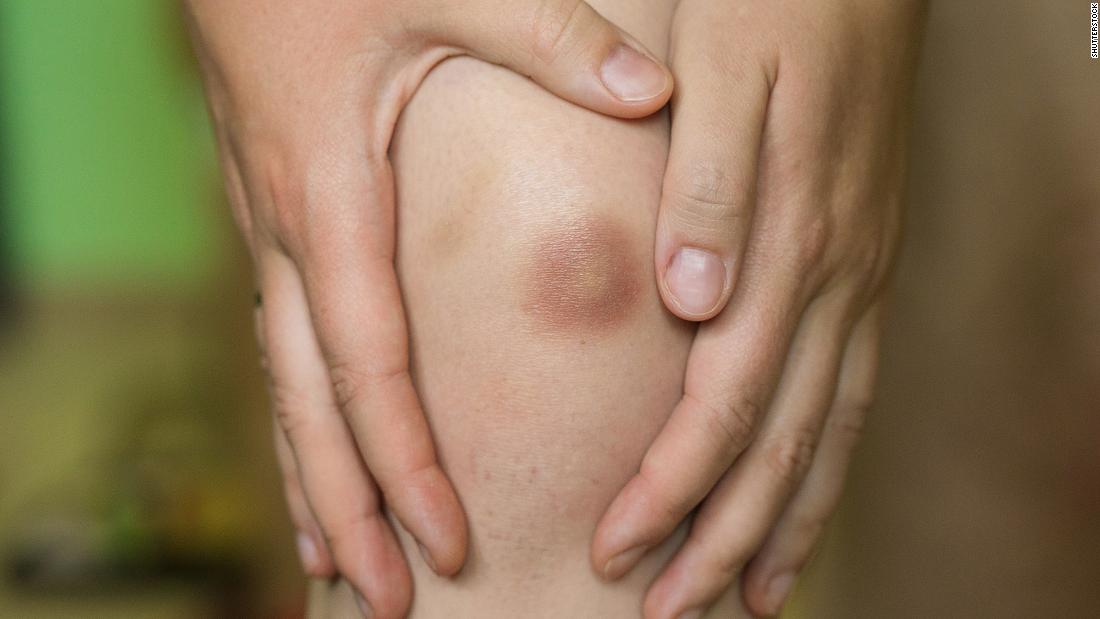
"An Ehler-Danlos syndrome flare means that I need support from more than just my friends... so thank you, sweet cane!"
Last month, singer Sia and "The Good Place" actress Jameela Jamil tweeted that they have EDS.
They're not alone. The syndrome is rare, but combined, its forms affect at least 1 in 5,000 across the world, the US National Library of Medicine says. And it's nothing new. Some claim the first description of the syndrome was by the Ancient Greek doctor Hippocrates in 400 BC.
But the syndrome often goes overlooked by many who may have it and mistake it for chronic pain.
Here's everything you should know about EDS:
There are many (many) forms of the syndrome
The group of disorders usually is characterized by fragile tissue and joints and skin that stretch more than they're supposed to.
Patients with EDS usually have weaker or less collagen -- the tough protein that helps keep connective tissue strong and flexible, the National Organization for Rare Disorders says.
What that means is their skin can often feel "velvety" or "loose" and, the organization said, that often bruises and scars easily.
"People with the classical form of Ehlers-Danlos syndrome experience wounds that split open with little bleeding and leave scars that widen over time to create characteristic 'cigarette paper' scars," the National Library of Medicine says.
Loose joints in people with EDS also may mean frequent dislocations.
One woman says she dislocated her jaw while chewing a tortilla chip, while her ankles twisted at "the slightest misstep" and her wrists were inflamed for years after she attempted a yoga pose.
"It wasn't unusual for me to suddenly lose my balance while walking down an even-paved path as though someone had slid a banana peel in front of me," Laura Kiesel wrote in Harvard's Health Blog. "I'd slam down hard on the ground, skinning knees and elbows."
Other forms -- like the vascular type -- can cause blood vessels to rupture and may have life-threatening complications, the National Library of Medicine says.
More severe types may cause curving of the spine, which can make breathing more difficult, or other abnormalities of the skeleton, muscles, teeth and gums.
Some types can even cause pregnancy complications.
What causes it?
The disorders are caused by gene mutations and usually inherited, according to the National Institutes of Health.
"Each type of EDS is a distinct disorder that 'runs true' in a family," the Ehlers-Danlos National Foundation says. "This means that an individual with Vascular Type EDS will not normally have a child with Classical Type EDS."
There are some other cases, the National Institutes of Health say, where new mutations in genes may occur in a person, even with no family history of the syndrome.
What's the risk age?
EDS can be present in people of all ages.
The National Center for Biotechnology Information says infants with some of the disorder types can take a longer time to sit, stand and walk.
"Those loose joins are unstable and prone to dislocation and chronic pain," the center says.
Another type may cause hip dislocation in infants at birth, according to the center.
How do I know if I have it?
When it comes to this syndrome, there's a lot of testing that goes into making sure you're correctly diagnosed.
But there are signs that should get you thinking about getting checked. Those include skin that bruises easily, frequent dislocations, chronic pain as well as flexible joints that seem to damage easily.
"Not only does this diagnosis account for my clumsiness and much of the bodily damage I have accrued over the years, it also helps explain some of my migraines and the frequent rashes on my skin, the trouble I have regulating my body temperature, and my bowel and bladder problems," Kiesel wrote for Harvard.
Bagikan Berita Ini















0 Response to "Lena Dunham says she has Ehlers-Danlos syndrome. Here's what it is"
Post a Comment